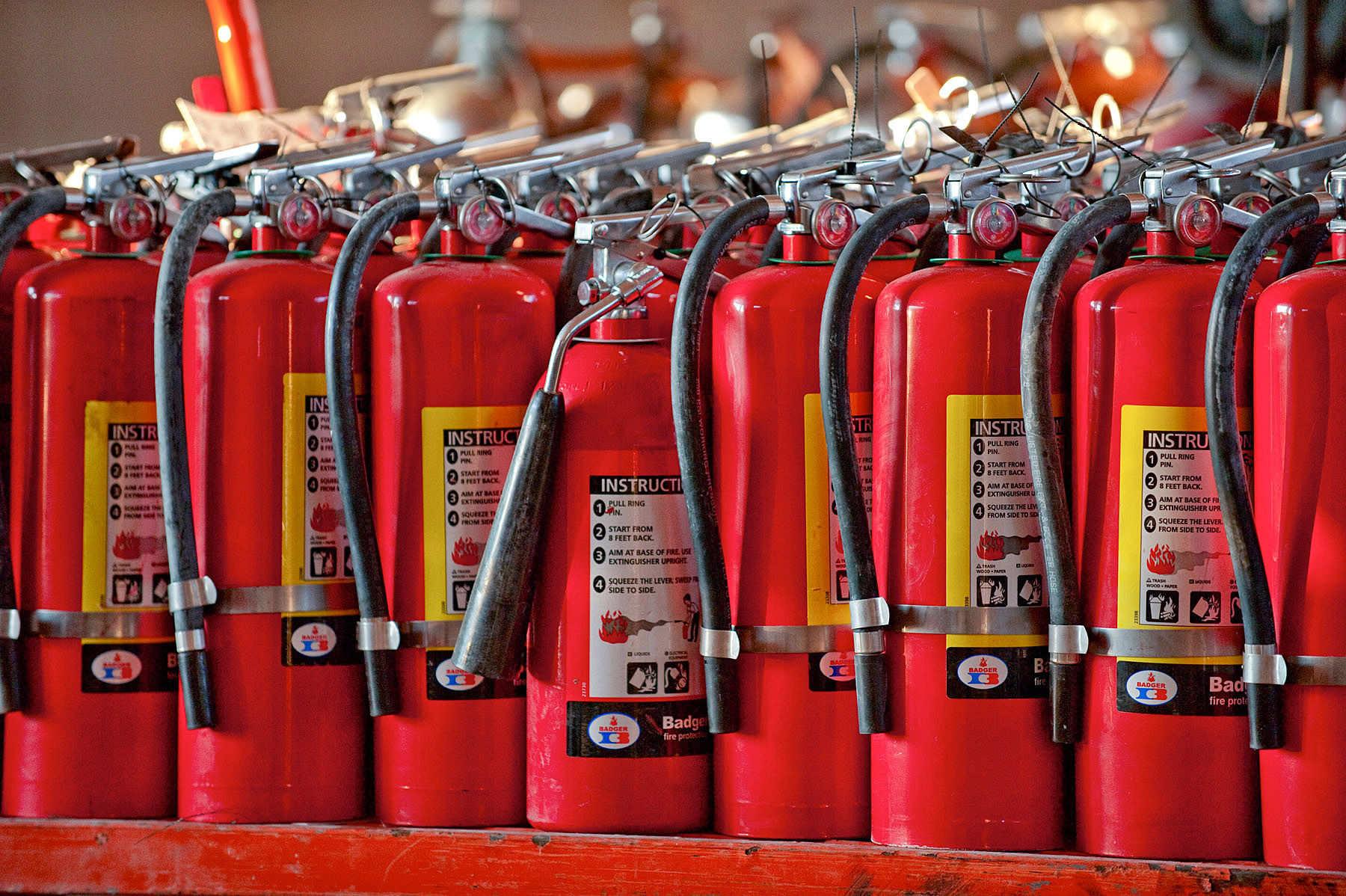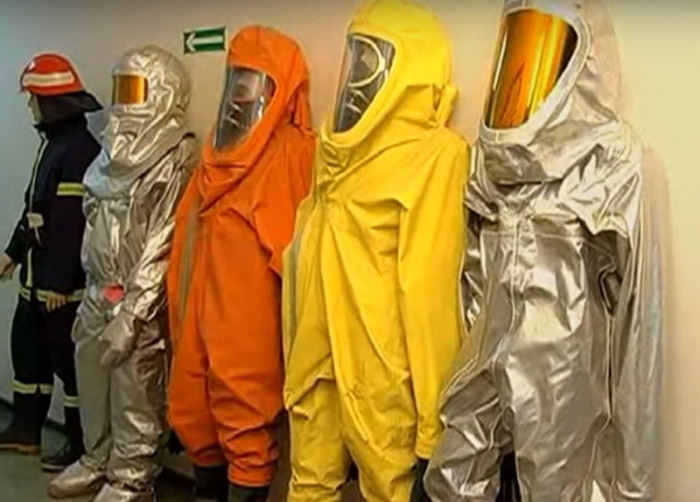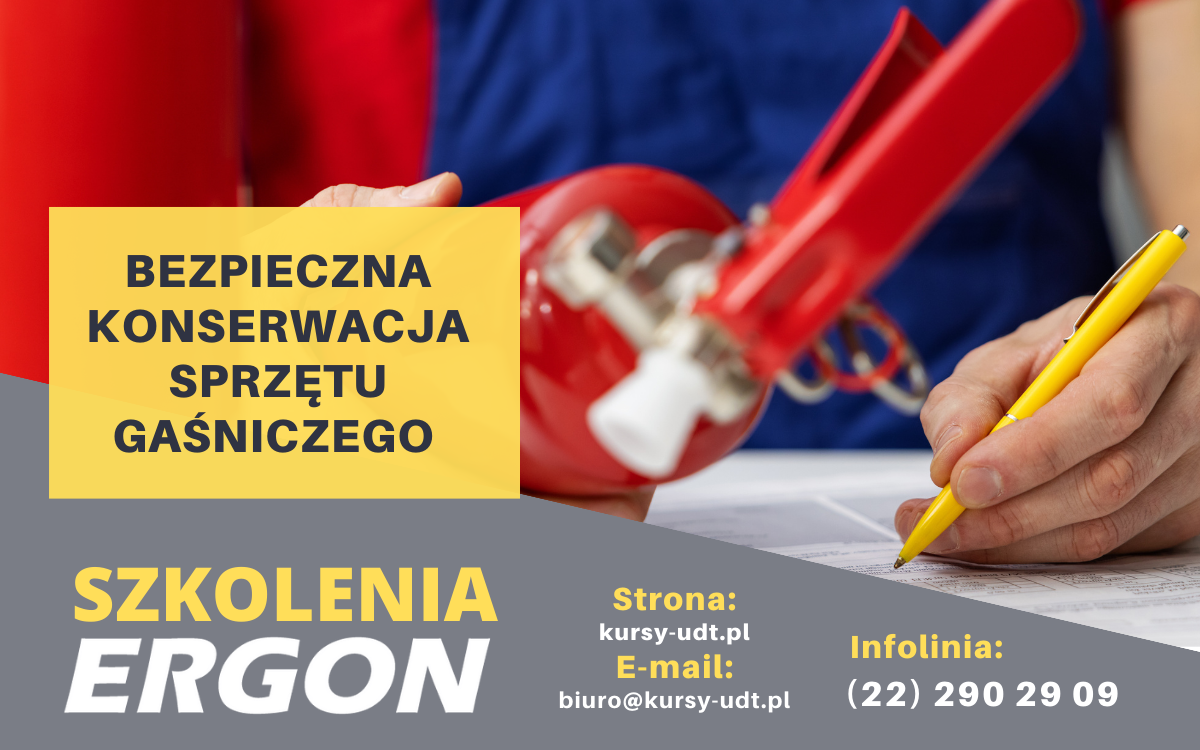Training for a maintenance technician of firefighting equipment
Join us for a professional course in firefighting equipment maintenance. Our qualified training staff will prepare you for your job as a firefighting equipment maintainer. Our company has been providing professional training for many years, so you can trust us. By attending the course you will gain new knowledge and skills and improve your professional qualifications.

Training program
Responsibility for fire protection of a building or site is borne by the manager or user on the basis of a civil law contract. The aim of the training Health and Safety is to provide the employee concerned with information on firefighting equipment as well as knowledge of how to behave in the event of a fire.
The theoretical part includes:
- help for the injured,
- emergency procedures and evacuation,
- operation of handheld firefighting equipment,
- distribution of fire-fighting equipment in the facility,
- fire and evacuation signage,
- getting to know the fire instructions of the facility,
- fire hazards.
The practical part includes:
- evacuation exercises,
- drills on the use of internal hydrants as well as fire extinguishers.
Who can take part in the course?
The training is open to any adult with at least primary education.

Date and place of classes
The next class date is always published on our website. Classes are held stationary at our headquarters in Warsaw or branches throughout the country. We also organize individual trainings at the client's premises.
Fire fighting methods
In the event of a fire, the relevant services must first be informed and the firefighting operation started. With the help of the handy fire extinguishing equipment found on the premises, namely internal hydrants or fire extinguishers, we are able to minimise the danger. However, in order to start extinguishing a fire, it is important to remember to use an extinguisher that is properly labelled.
| AND | To group AND The fire is a burning organic solid that burns when it glows, such as wood or paper. To adequately extinguish the fire, we use an extinguishing agent such as carbon dioxide (snow extinguisher), extinguishing powder, extinguishing foam or water. |
| B | In the case of combustion of flammable liquids or solid substances melting due to heat (solvents, melting plastics, floor polishes), we use fire extinguishers from the B by choosing an extinguishing agent such as halon, carbon dioxide, dry powder or foam. |
| C. | When a fire has occurred and flammable gas (acetylene, natural gas, propane-butane) is present, the following group of extinguishing agents should be used C.: carbon dioxide, dry powder and halon. |
| D | Flammable metals (uranium, magnesium, sodium) are extinguished with a powder extinguisher of the group D. |
| E. | Group extinguishers E. used to be used to extinguish fires caused by or in the presence of live equipment. Now the symbol is not used, as we are informed by the writing on the extinguisher label. |
| F. | Oils and fats in kitchen appliances should be extinguished with fire extinguishers from the group F, for example by means of a vertical, powder or snow extinguisher marked with F. |
Hand-held fire extinguishing equipment includes the aforementioned fire extinguishers weighing up to 20 kg and extinguishing agents weighing up to 12 kg, as well as fire blankets. The fire extinguishing operation itself, when carried out correctly, depends among other things on the choice of the right extinguishing agent. However, in order to carry it out safely, it is necessary to recognise the type of fire being extinguished and to have a minimum of knowledge about the action of the extinguishing agent.
Internal hydrant is a water supply valve installed on a special network, enclosed in a cabinet and equipped with a nozzle and fire hose. Its diameter is 25 or 50 mm. It is used to locate a fire in the nucleus, and water is used as the extinguishing agent. Two people should be involved in operating the hydrant. One doses the amount of water through the hydrant and the other uses the nozzles. Water must not be used to extinguish the aforementioned live electrical equipment and in its vicinity, as well as substances that form a flammable gas when bonded with water.
Vertical water extinguisher is a cylindrical container containing a water-foam-forming substance. To use the equipment in question, the safety seal must be broken and the striker pressed in, directing the foam jet into the centre of the fire and remembering that the extinguisher only works in the vertical position. If you stop the extinguisher from operating, you should release the lever of the nozzle.

Powder fire extinguisher also with a cylindrical receiver, is provided with a lever that activates a valve or an impactor with propellant. In order to use it, the seal and locking pin must be broken and the lever or knocker must be operated towards the fire focus. As with the previous extinguisher, this one also works correctly in the upright position and, in order to stop its operation, the actuating lever or the striker lever must be released.
Snow fire extinguisher is a cylindrical container fitted with a hose and a valve ending in an outlet nozzle. Inside it there is liquefied carbon dioxide. To make the extinguisher stop working, close the valve. It is also important to remember that it must not be used to extinguish people and must only be held by the handle in an upright position.
Fire blanket is a sheet made of fibreglass, a completely non-flammable fabric with a surface area of approximately 2 m². It nips the fire in the bud by cutting off the airflow to the glowing object. To use it, it must be removed from its case and unfolded, tightly covering the burning object. When using it on a person, they should first be turned over and then impermeably covered with a blanket.
If you have any questions about the course, please feel free to contact us.





























